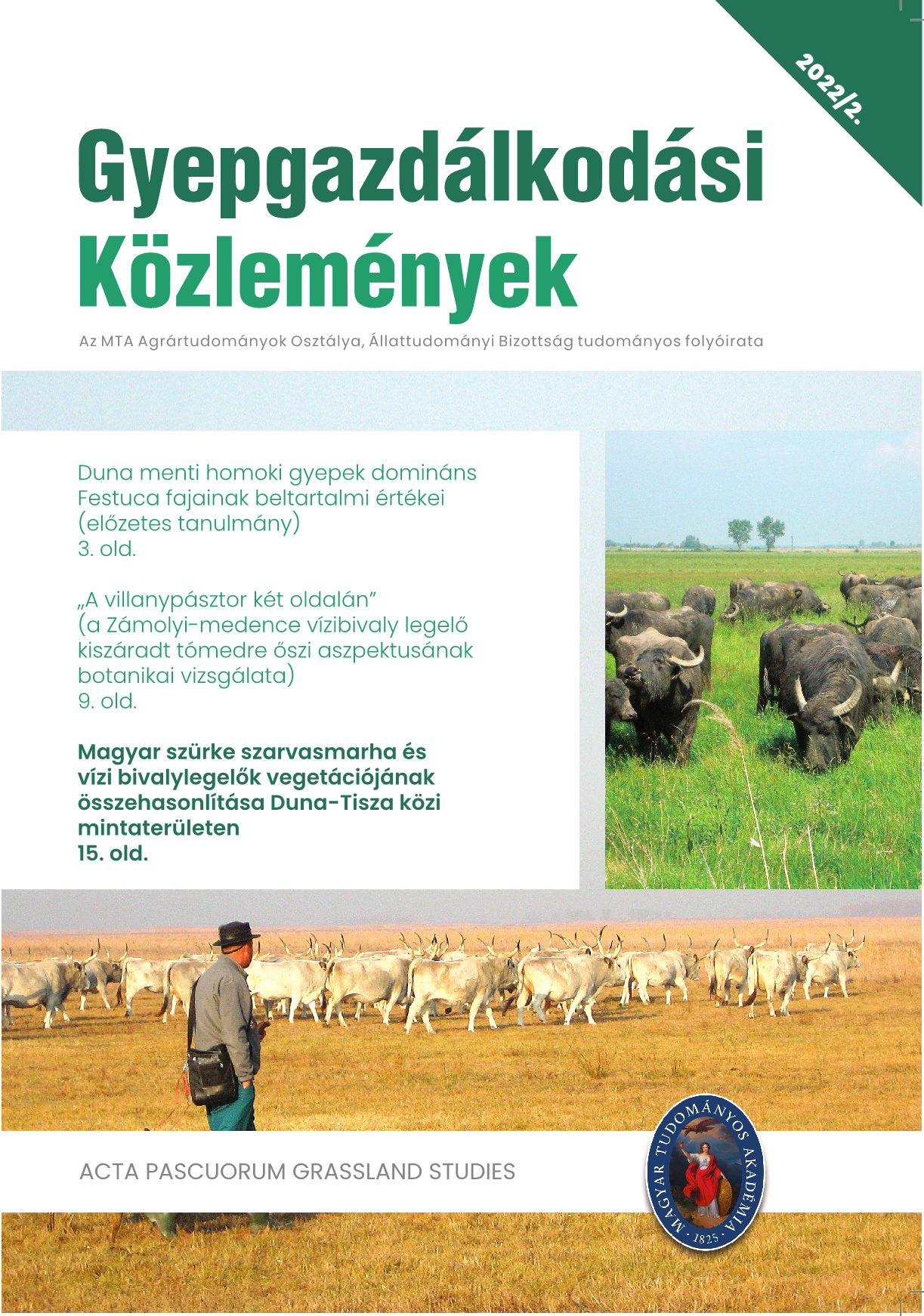Comparison of vegetation of Hungarian Grey Cattle and Domestic water buffalo pastures in a sample area of the Danube-Tisza Interfluve
Authors
View
License
Copyright (c) 2023 Grassland Studies

This work is licensed under a Creative Commons Attribution-NonCommercial-NoDerivatives 4.0 International License.
How To Cite
Abstract
We made a coenological study on the Kelemen-szék in the Kiskunság National Park. The coenological studies were carried out twice, in 2014 and 2015. During these two surveys, we examined in total 90 quadrats of mixed grazed and fenced control areas by domestic water buffalo and Hungarian Grey Cattle. Due to the size and heterogeneity of the studied area, we intended to investigate small homogeneous areas and respective control areas. Coenological surveys were done on lower and higher lying pastures, saline soil areas and loess areas.
The studied areas were assessed based on the Borhidi relative plant ecological indicators NB (relative nitrogen values) and WB (relative groundwater and soil moisture indicator values). The distribution of nature conservation value categories (TVK) and social behavior types (SzMT) were used to assess the areas. Cluster analysis and detrended correspondence analysis (DCA) were used to evaluate the data.
The data were assessed based on both habitat condition in terms of naturalness condition. On the other hand, relative ecological indicators of the occurred species. Our objectives were to provide a detailed description of the vegetation composition of the study areas, to assess the changes in grassland composition and their conservation impacts as a result of grazing and its abandonment, to assess the impact of grazing on the occurrence of protected species and weed species, and to assess grazing as a conservation habitat management practice.
The examination of the species composition showed that the loess and saline soil areas grazed by domestic water buffalos and Hungarian Grey Cattle provided a better composition of grassland in terms of natural condition compared to the control areas. In the dense and tall Puccinellia swards vegetation type, grazing requires more attention, because it is more vulnerable to grazing, has fewer species and is more damageable.

 https://doi.org/10.55725/gygk/2022/20/2/11574
https://doi.org/10.55725/gygk/2022/20/2/11574